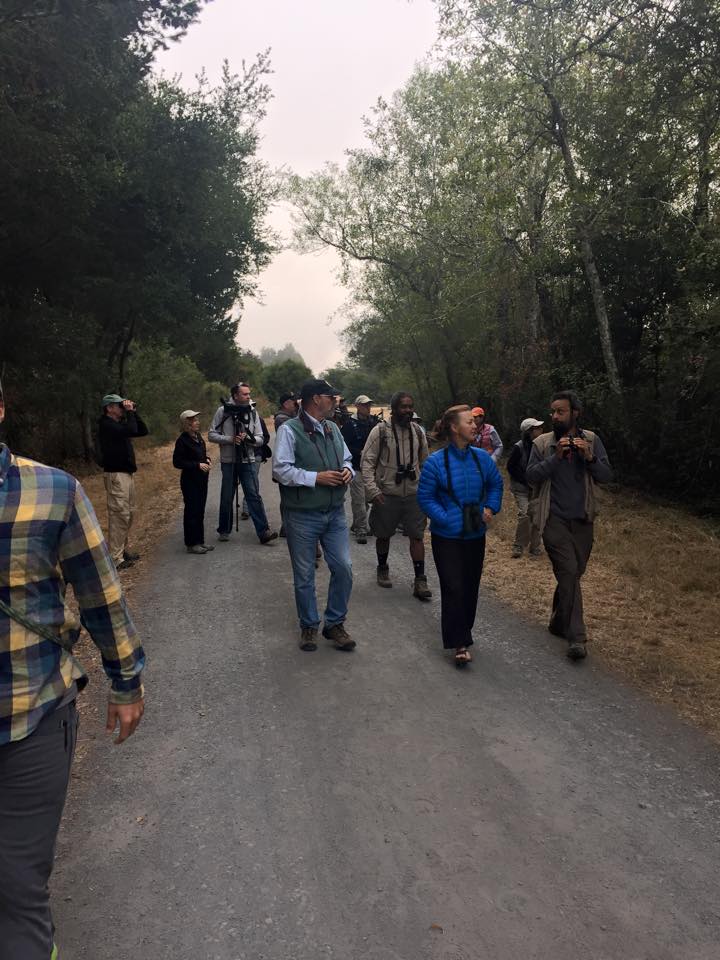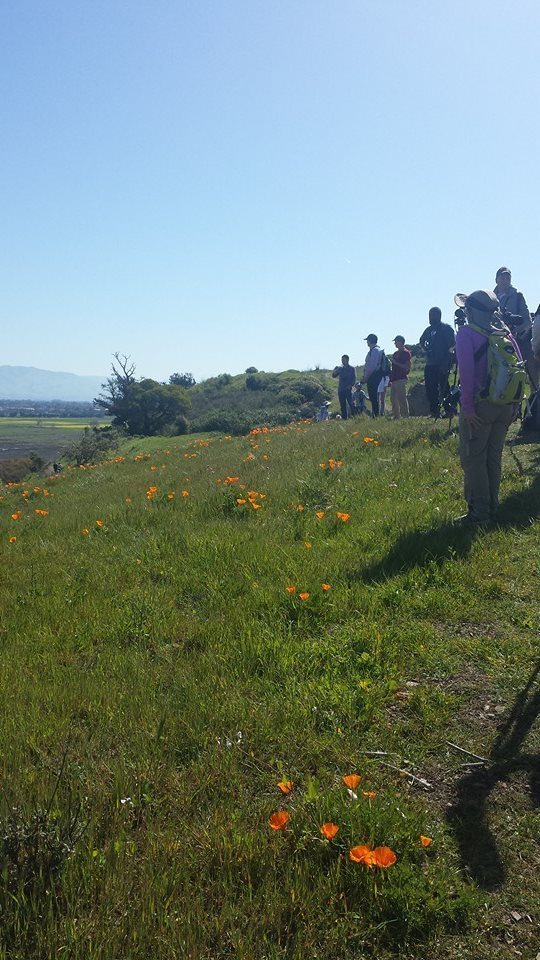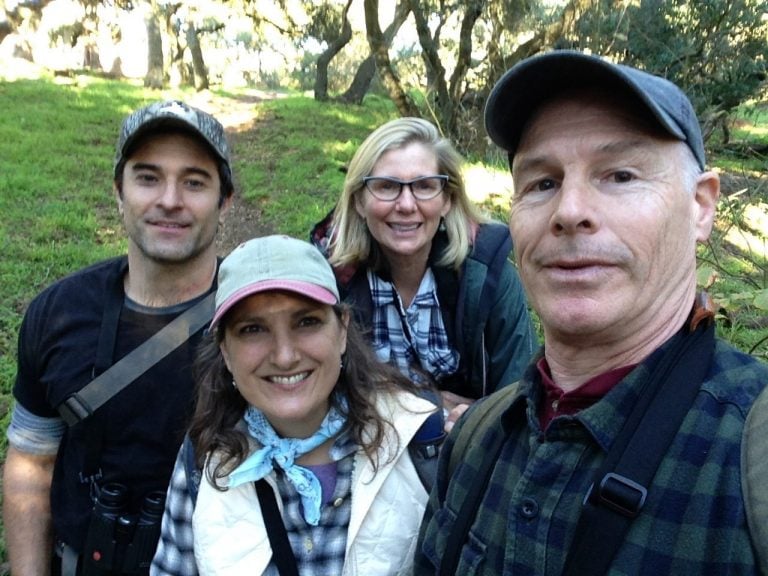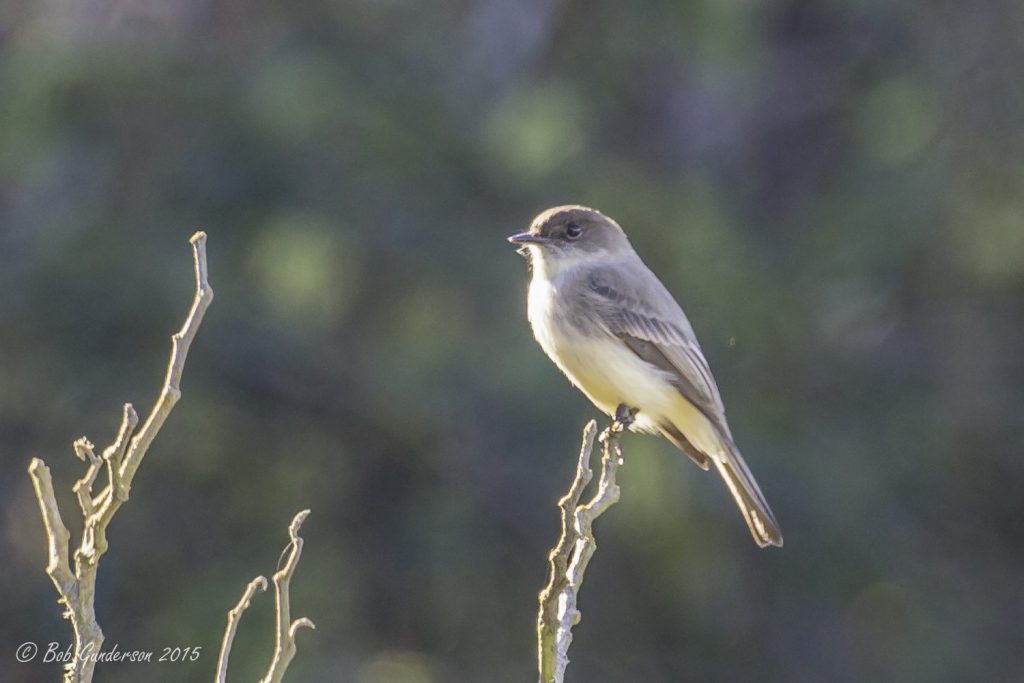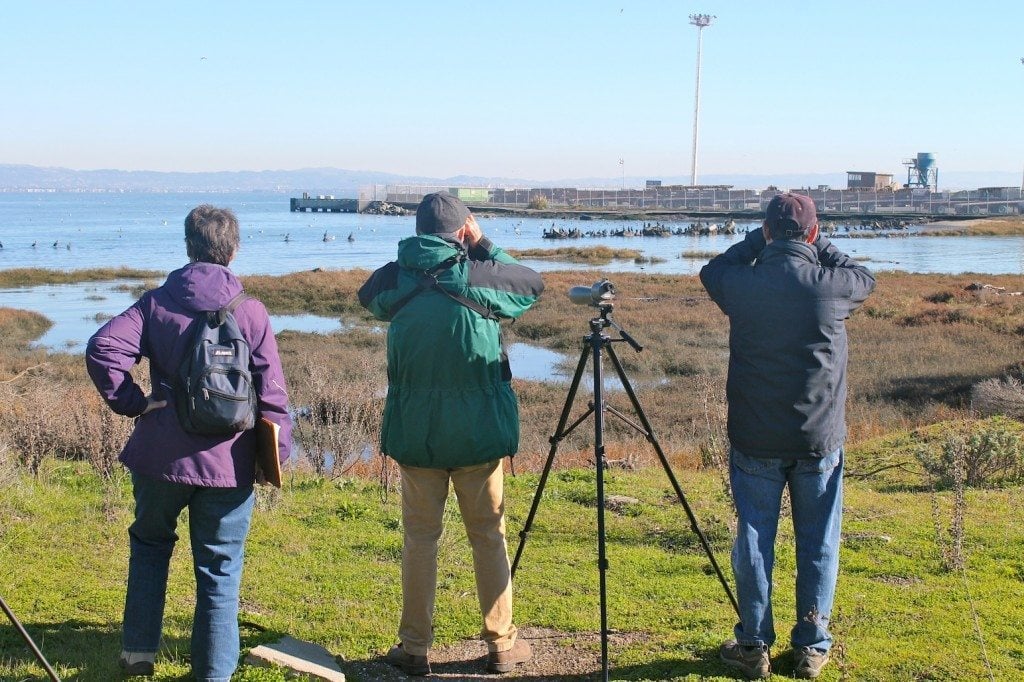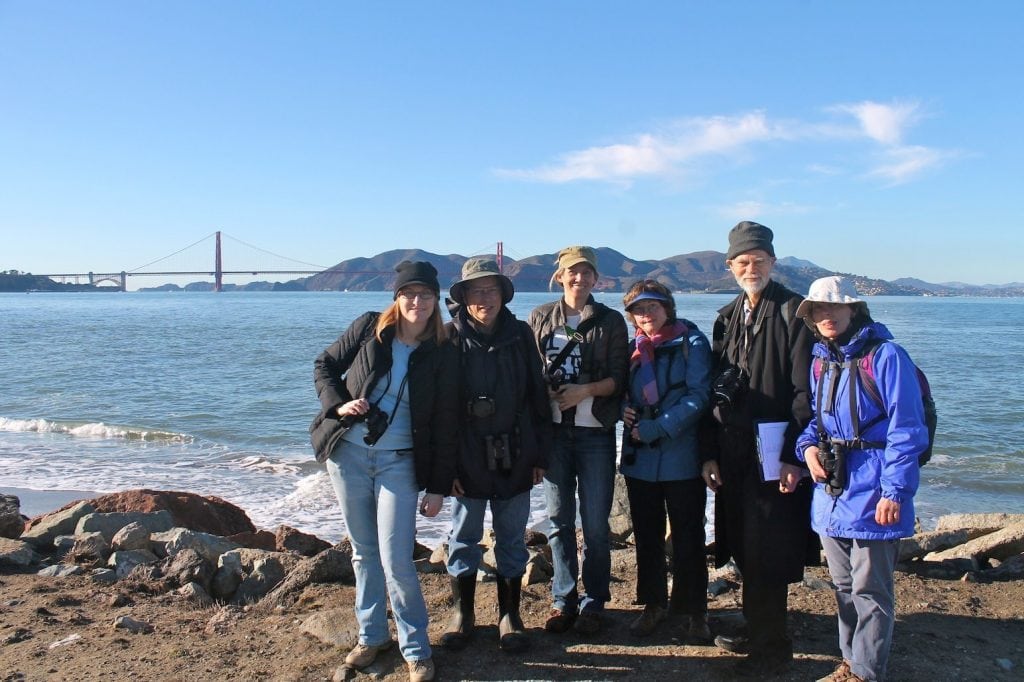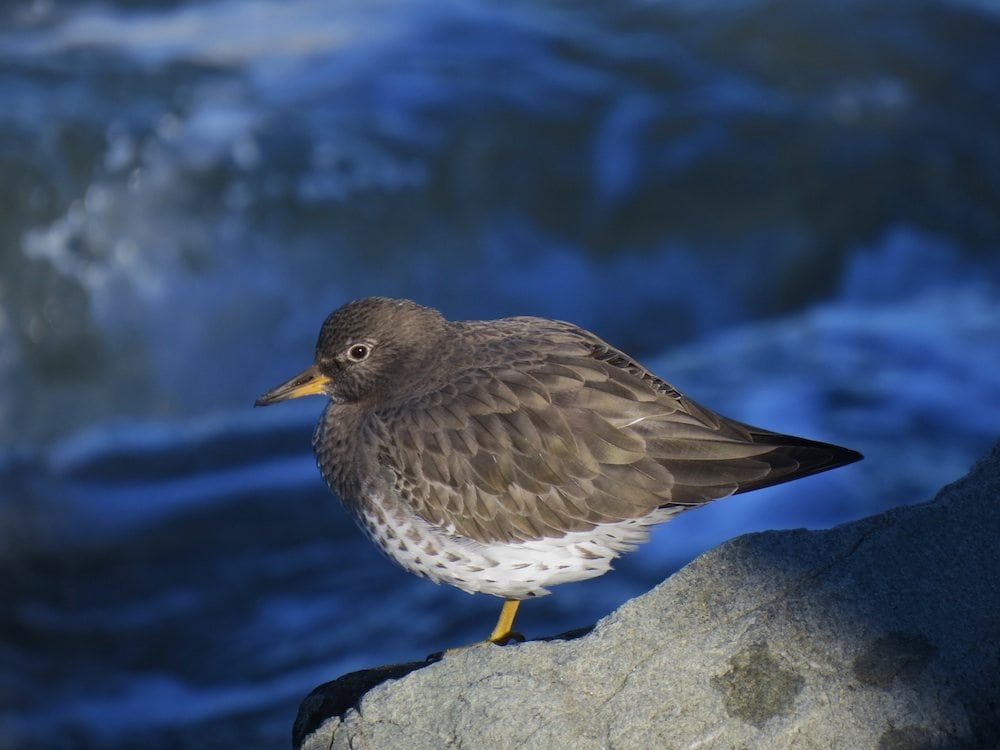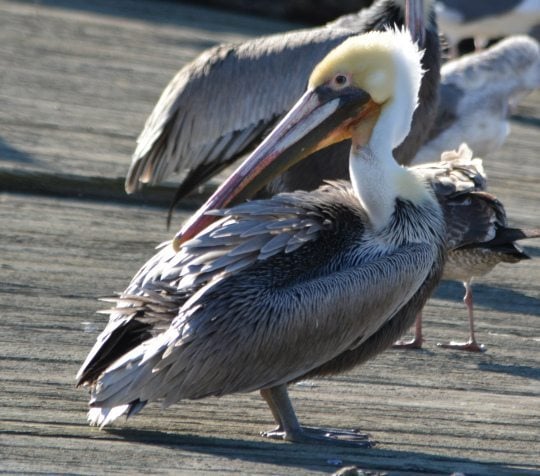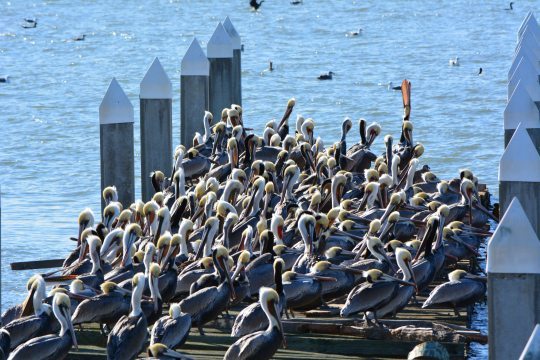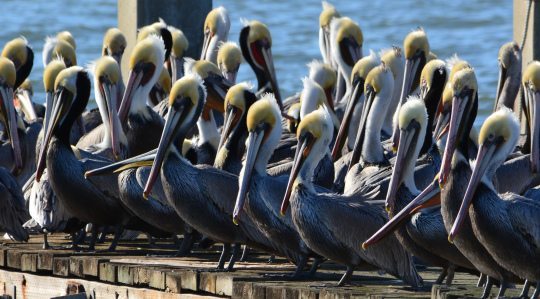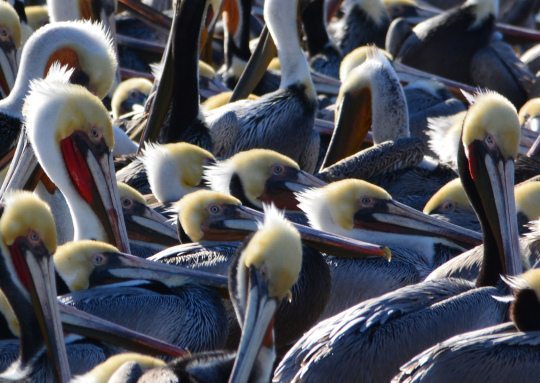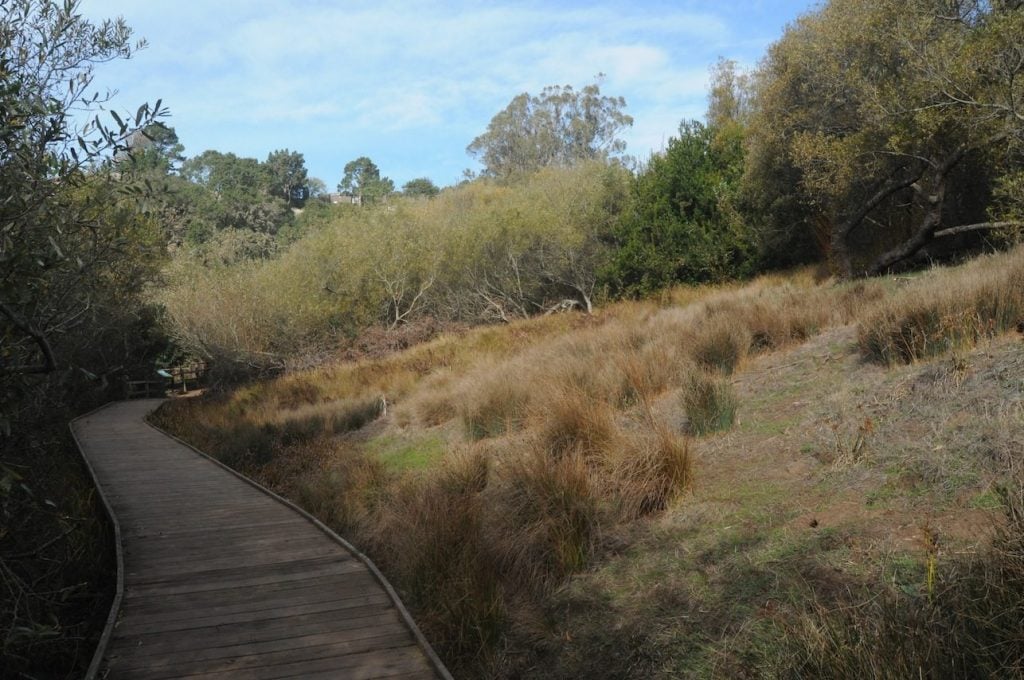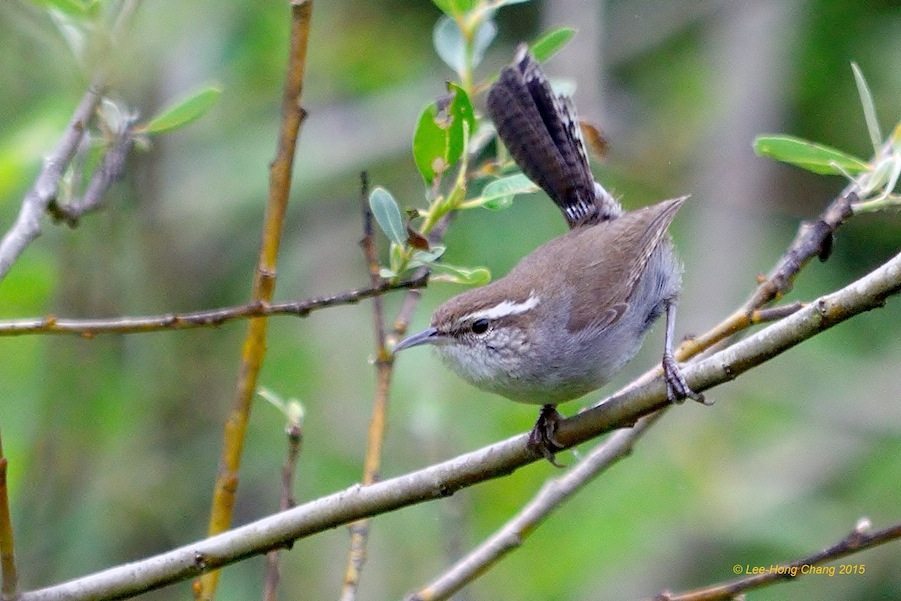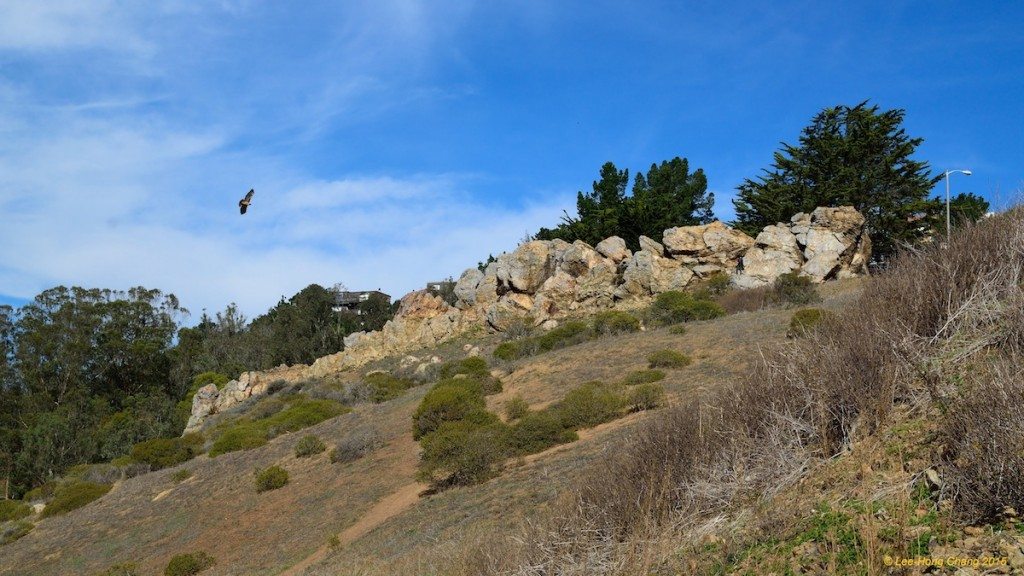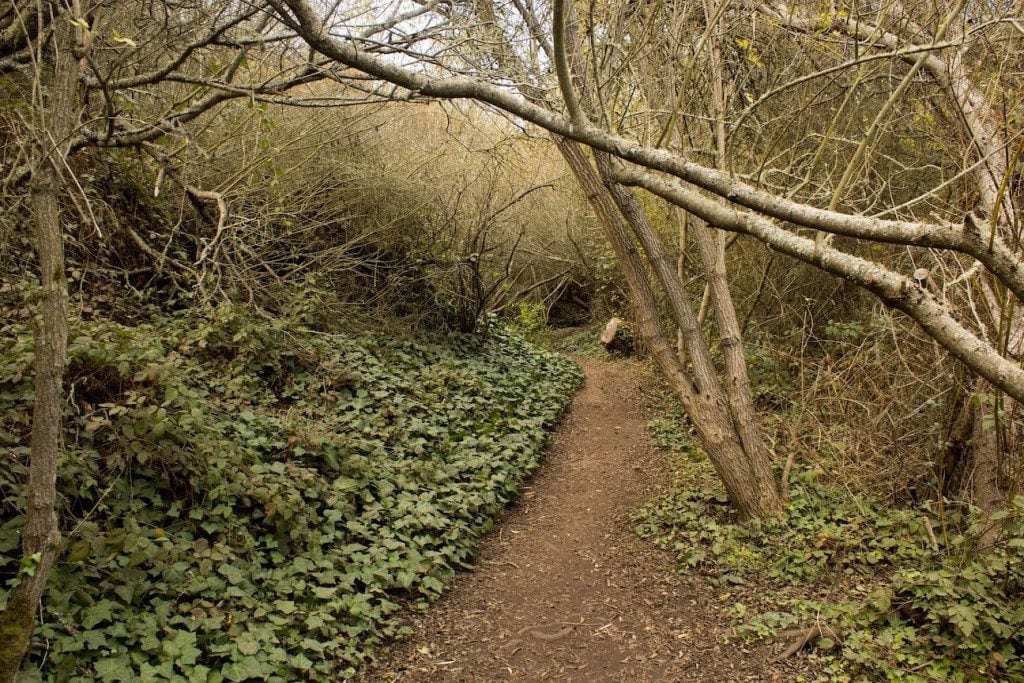Watching Black Oystercatchers in breeding season
By Jane Turner Hart
This past spring and summer I had the chance to observe a remarkable period of a Black Oystercatcher’s life: the nesting, brooding, hatching, protecting, feeding, and fledging of its chicks in the exposed, rugged territory of the rocky intertidal zone along the Pacific Coast.
In February, Noreen Weeden of Golden Gate Bird Alliance emailed me about volunteering to help with a survey project undertaken by Audubon California and others. The purpose was to collect baseline data on the Black Oystercatcher population, with a focus on the breeding and fledging success of pairs along California’s coast. How many eggs were laid in the nest? How many chicks would successfully fledge from that nest this year? In recent years, biologists have become more aware of the very small population size of Black Oystercatchers, thought to be about 10,000-12,000 individuals globally. Data suggest that the survival rate of their young has been dropping; they appear to have low reproductive success. I was definitely interested.
In late April, I began to head out to Land’s End in San Francisco where Black Oystercatchers had been seen recently.
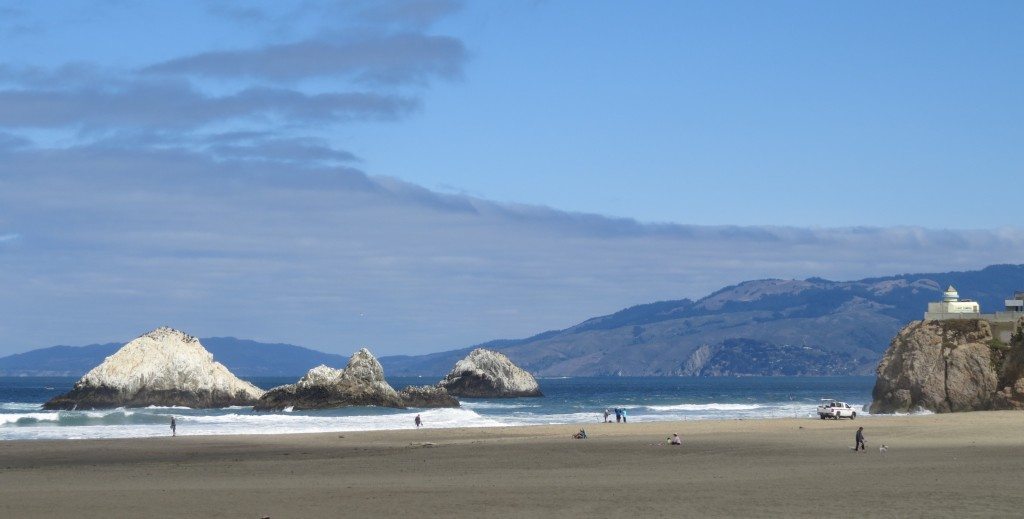 View towards Land’s End, the Cliff House, and the rock islands from Ocean Beach.
View towards Land’s End, the Cliff House, and the rock islands from Ocean Beach.
My early observations were from the back deck of San Francisco’s Cliff House. With a scope, binoculars and a smallish 50x Canon Powershot SX50 HS, I set up in the south corner of the deck to look west at three offshore rocks, collectively referred to as Seal Rocks. The distance from the deck to the rocks was roughly 450 feet.
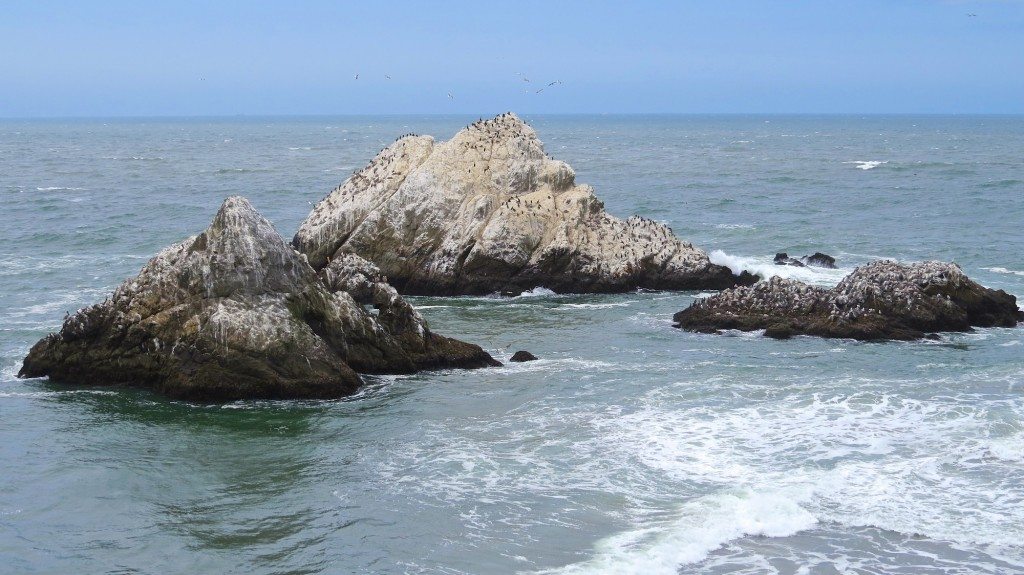 The Seal Rocks: Cone Rock (left), Arch Rock (center), and Repose Rock (right).
The Seal Rocks: Cone Rock (left), Arch Rock (center), and Repose Rock (right).
In Mid-April, I spotted a group of Black Oystercatchers flying north over the Seal Rocks. They circled the three islands, and two birds dropped down and landed on a sunlit bed of black and golden mollusks and limpets on Repose Rock.
The two black/dusky birds were difficult to see, except for their blood-red bills moving against the dark shell background. They walked slowly around the carpet of invertebrates, poking and pulling meaty bits from the mollusks. One of them stepped down into a deep pool of tidal water on the ledge, dunked its head in the pool several times, leapt out, shook off the drops, and then found a spot to sit and preen contentedly for several minutes.
I soon learned that Repose Rock was the Black Oystercatchers’ go-to spot for successful foraging at low tide.…


